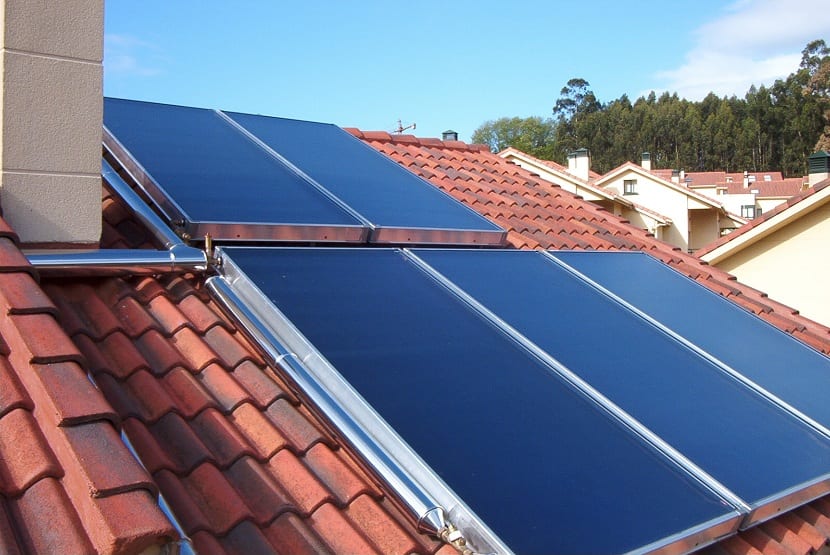
When we talk about solar energy, the first thing we think of is solar panels. That is photovoltaic solar energy, perhaps the most famous of all renewable energies, along with wind. However, there is another type: solar thermal energy.
If you want to know everything about this type of solar energy, from what it is to what uses it has, through its characteristics, keep reading 🙂
What is solar thermal energy?
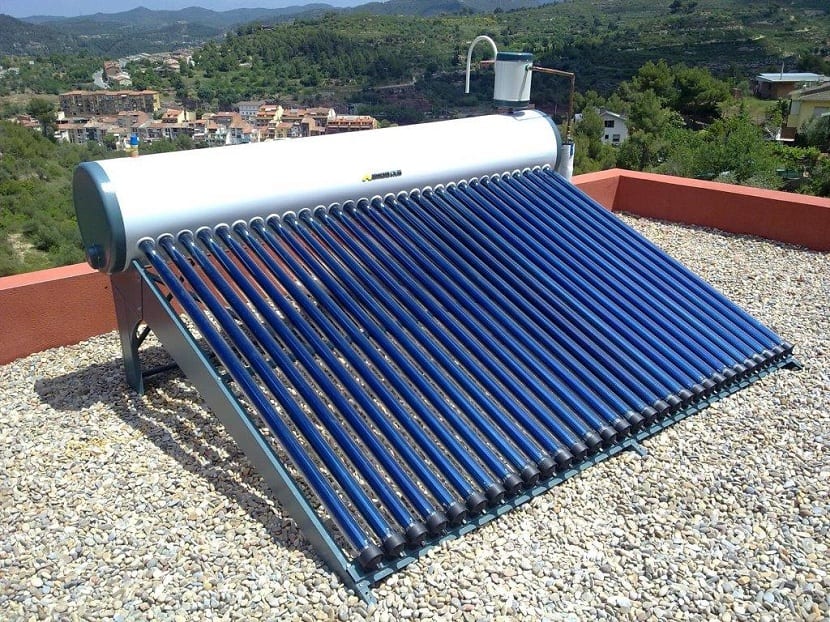
As its name suggests, it is a type of renewable and clean energy that consists of harnessing the sun's energy to generate electricity. Unlike the solar panels used in photovoltaic energy to generate electricity from photons of light found in solar radiation, this energy takes advantage of said radiation to heat a fluid.
When the sun's rays strike the fluid, it heats it up and this hot fluid can be used for various uses. To get a better idea, 20% of the energy consumption of a hospital, a hotel or a home corresponds to the use of hot water. With solar thermal energy we can heat the water with the energy of the sun and take advantage of it so that, in this energy sector, we do not have to use fossil or other energy.
Surely you are thinking that the water of rivers, lakes and reservoirs are exposed to solar radiation and, however, they do not heat up. And it is that to take advantage of this solar radiation a special installation is necessary that helps to heat the fluids for, later, to use them.
Solar thermal energy contributes significantly to reducing costs, thereby saving energy and reducing CO2 emissions that cause global warming and trigger climate change.
Components of a thermal installation
Once we know what solar thermal energy is, we must have the necessary elements to build a solar installation that allows us to take advantage of this energy resource.
Catcher
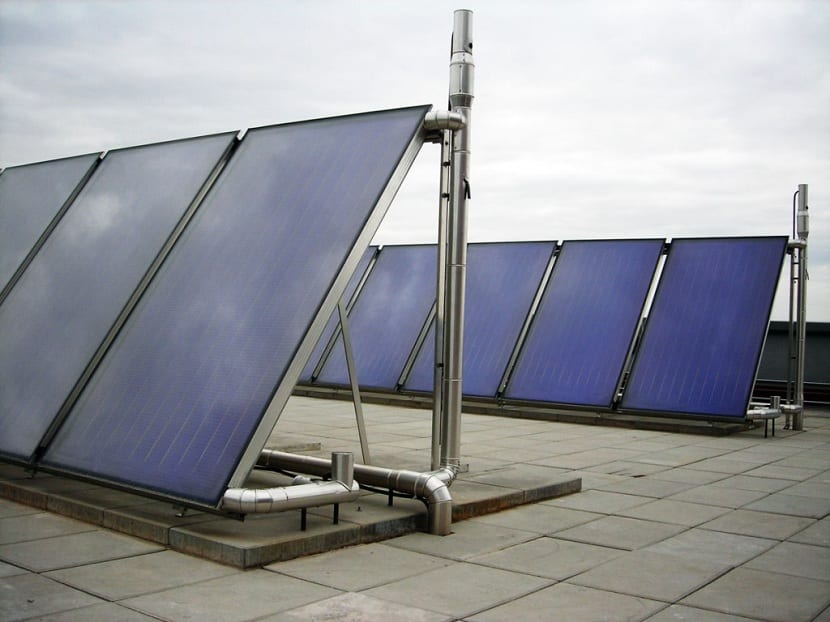
The first thing that an installation of this type has to have is a collector or solar panel. This solar panel does not work the same as the well-known photovoltaic. It does not have a photovoltaic cell that collects photons of light to transform them into energy, but rather allow us to capture solar radiation to start heating the fluid circulating within them. There are different types of collectors and with differences in their performance.
Hydraulic circuit
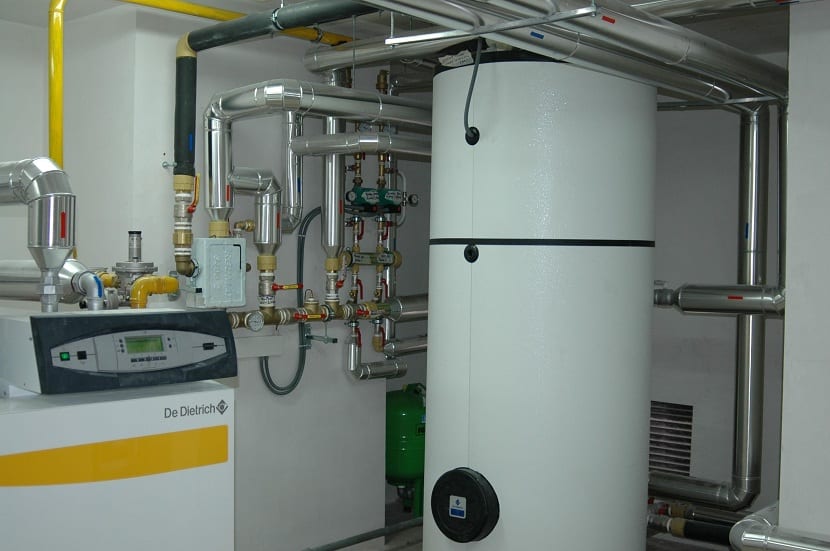
The second is the hydraulic circuit. These are the pipes that make up the circuit where we will transport the heat transfer fluid that will take care of the action we are going to carry out. The circuit is usually closed in most installations. Therefore, there is talk of one way circuits, from the panel, and return circuits, up to the panel. It is as if this circuit were a kind of water boiler that contributes to the heating of a place.
Heat exchanger
They are in charge of transporting the heat through the circuit. The heat exchanger transfers the energy captured by the sun to the water. They are usually external to the tank (called plate exchangers) or internal (coil).
Accumulator
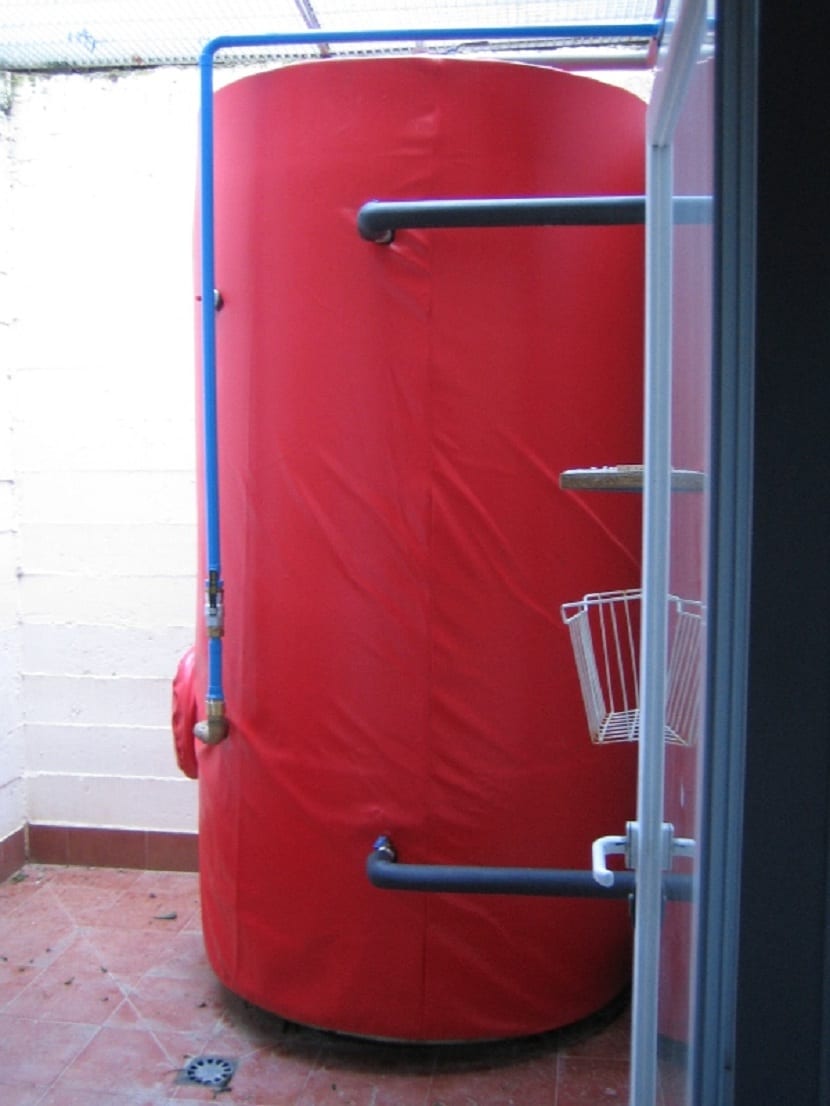
Since the demand for solar energy is not always the same, as in photovoltaics, it requires some energy storage system. In this case, the solar thermal energy is stored in the accumulators. This accumulator manages to store hot water to have it available when we need it. They are tanks that have the capacity and the necessary insulation to avoid energy losses and keep the water hot at all times.
Circulation pumps
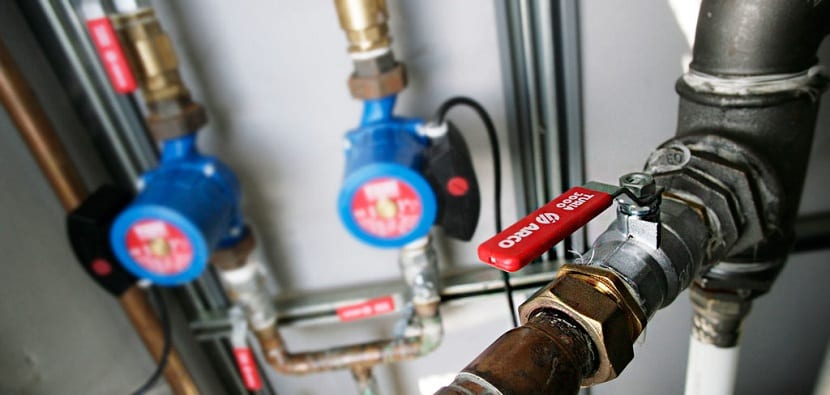
To carry the fluid from one place to another, pumps are needed that serve to overcome the pressure drops of the circuits and the forces of friction and gravity.
Auxiliary power
When there is less solar radiation, the production of this energy decreases. But that is not why the demand does as well. Faced with this type of situation in which demand exceeds supply, we will need a support system that heats the water and that is totally independent of the solar system. This is called a backup generator.
It is a boiler that begins to work in conditions in which solar thermal energy is more unfavorable and heats the stored water.
Items Needed for Safety
It is important to have a security system to ensure that the installation works in optimal conditions and does not deteriorate over time. The elements that make up a security system are:
Expansion vessels
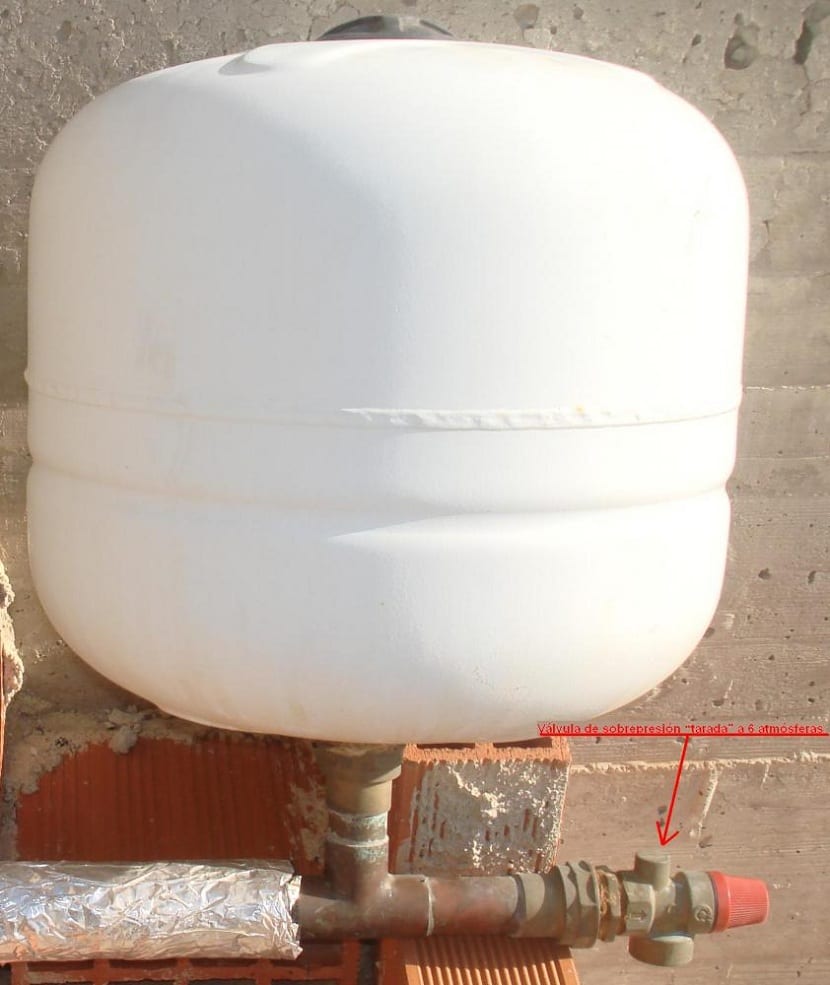
As we know, as water increases its temperature, so does its volume. Therefore, an element is necessary that is capable of absorbing this increase in volume as the heat transfer fluid expands. Expansion vessels are used for this. There are several types of glasses: open and closed. The most used are the closed ones.
Safety valves
Valves are used for pressure control. When the pressure value set in the calibration process is reached, the valve discharges liquid to prevent the pressure from reaching potentially dangerous limits.
Glycol
Glycol is an ideal fluid to transport the heat of the solar thermal installation. The most advisable thing is that it be an antifreeze fluid, since in areas where the temperature is very low, a freezing of the water in the circuits could destroy the entire installation. Furthermore, the fluid must be non-toxic, not boil, not corrode, have a high heat capacity, must not be wasted and be economical. Otherwise, the energy would not be profitable.
The ideal in an installation of this type is to have a percentage of 60% water and 40% glycol.
Heat sinks
Since in many occasions the water heats up excessively, it is important to have heatsinks that prevent this dangerous heating. There are static heatsinks, fans, etc.
Traps
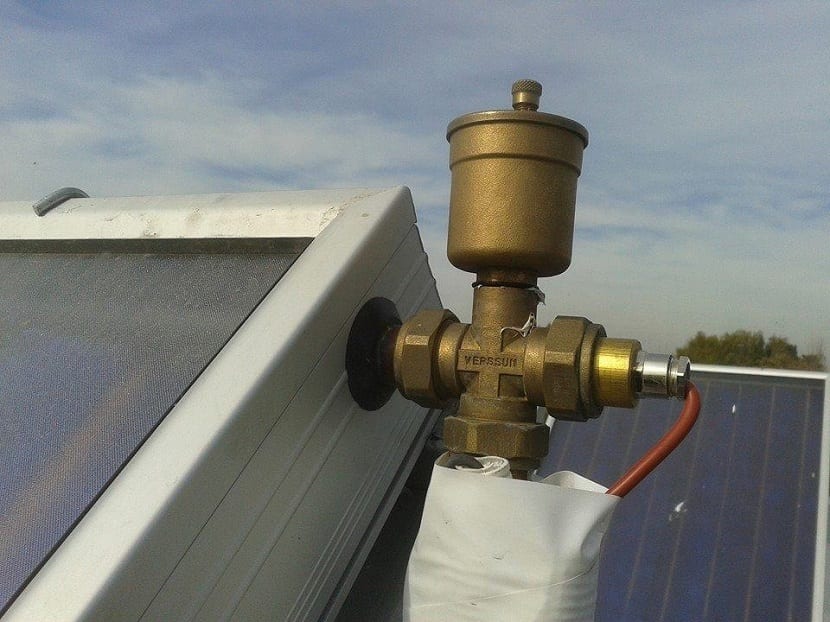
The traps are capable of extracting the air that accumulates inside the circuits and that can cause serious problems in the operation of the installation. Thanks to these purgers this air can be extracted.
Automatic control
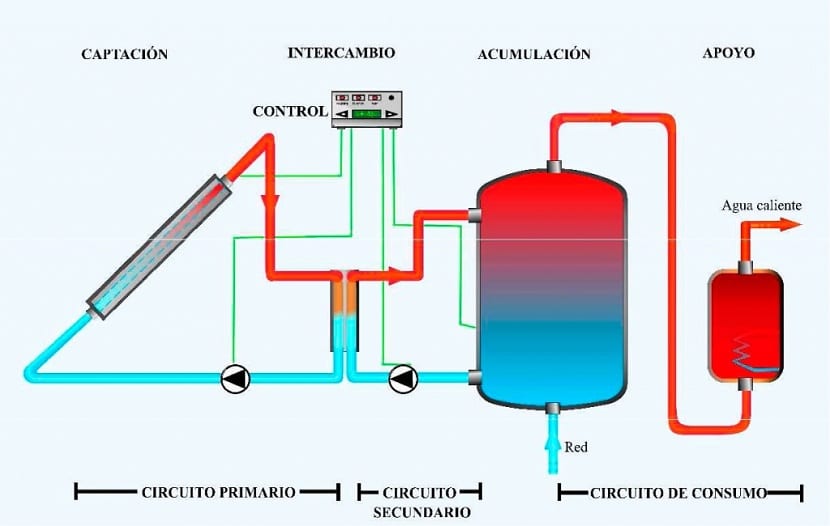
It is the element that makes everything work correctly, since it supposes an automatic control that measures the temperatures in the panels, tanks, programming, activation of the electric heat sink (if this system exists), programmer, pump control, etc.
With this information you can learn more about solar thermal energy and its applications.